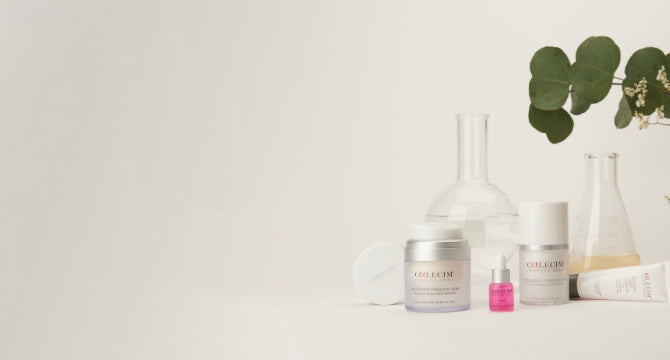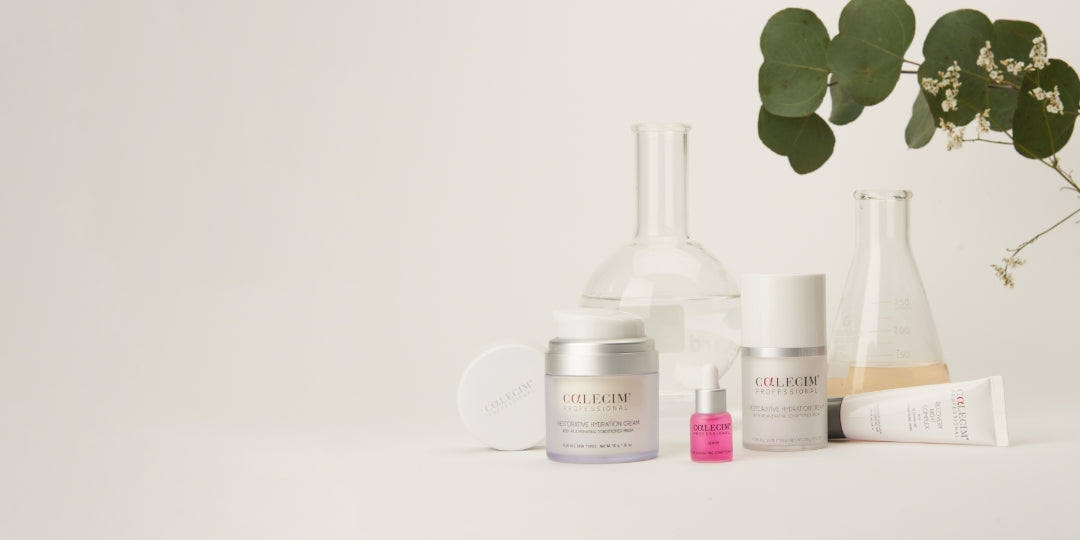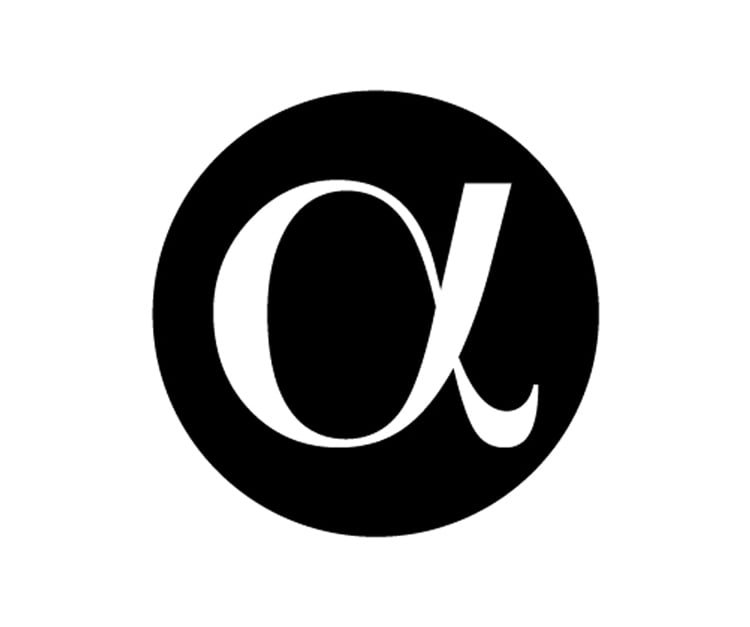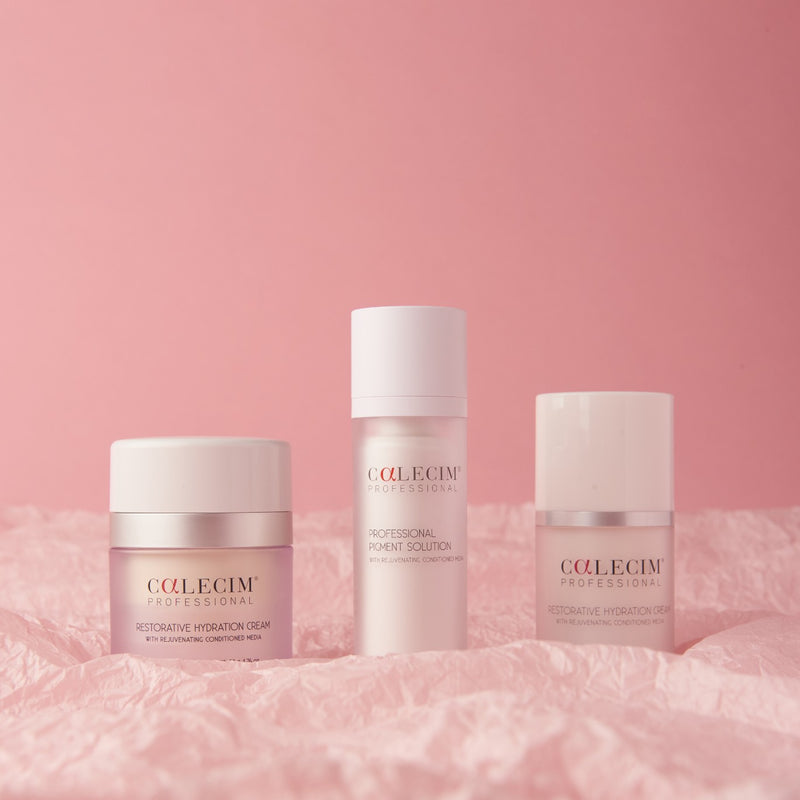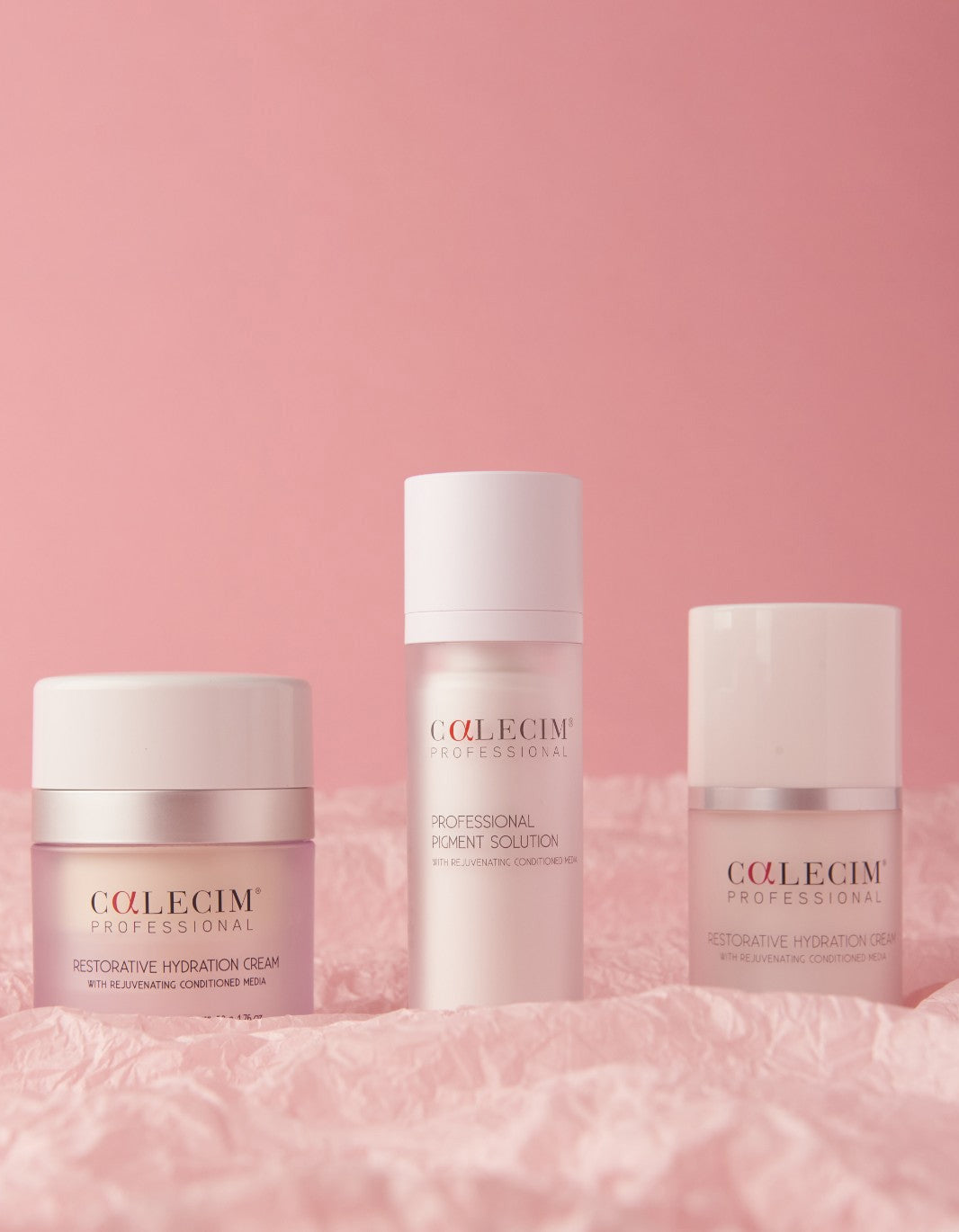Cord lining mesenchymal stem cell exosomal proteins and their effects on hair follicles
The PMFA Journal, December/ January 2024, Volume 11 Issue 2, Pages 25-27
Umbilical cord lining (UCL) mesenchymal stem cells (MSC) produce proteins and growth factors that, when packaged into exosomes in fixed proportions, can stimulate repair and regeneration in recipient cells. The pleiotropic properties of UCL-MSC have been shown to be effective in treating several medical conditions, including hair loss. In vitro analyses of hair follicles exposed to red deer UCL-MSC exosomal proteins demonstrated increased cellular proliferation and decreased inflammation markers of the dermal papilla.
In human studies, topical application of red deer UCL-MSC exosomal proteins to the scalp of a patient suffering post COVID-19 telogen effluvium was shown to result in hair regrowth. Similar positive results were demonstrated when using red deer UCL MSC exosomal proteins after microneedling in males and females suffering from androgenetic alopecia as well as alopecia areata. A small pilot study in 10 patients treated with red deer UCL-MSC exosomal proteins after microneedling demonstrated an increase in total hair count and hair calibre, with a decrease in interfollicular distance after 12 weeks. Overall, red deer UCL-MSC exosomal proteins may promote hair growth by reducing inflammation and restoring a healthy hair cycle, as well as by stimulating regeneration processes in the dermal papilla cells.

Figure 1: Cell proliferation assay of adult skin fibroblasts 74, 75 and 76 Passage 3 cells in different culture conditions on day five, demonstrating similar levels of proliferation in fibroblasts exposed to human and red deer (PTT-6) UCL-MSC exosomal proteins in conditioned media.
Introduction
Exosomes are small, vesicles produced by all cell types [1]. Originally thought to be the cell’s 'rubbish bin' [2], these membrane-bound particles, containing a variety of molecules such as cytokines, growth factors, peptides, lipids, and nucleic acids, are now known to be important mediators of intercellular communications [2]. In vitro, exosomes can be released from cultured cells in the culture media. This 'conditioned media' containing exosomes can then be collected and evaluated for various therapeutic applications.
The proportion of cytokines and growth factors contained in exosomes is specific to the cell type from which they are produced [3]. The UCL is a rich source of both mesenchymal and epithelial stem cells that secrete exosomes promoting cellular repair, regeneration and renewal [4]. Stem cell-derived exosomes offer important advantages over stem cells, e.g., less immunogenicity, less potential oncologic complications and stability for long-term storage and transportation [5]. Early studies demonstrated that stem-cell derived exosomes accelerated healing in a variety of wounds, and in the US, human UCL-MSC exosomes are now entering phase two trials [6] with the Food and Drug Administration (FDA) for treatment of chronic diabetic foot ulcers.
A study comparing conditioned media from red-deer UCL-MSC with that from cultured human UCL-MSC, showed that both could significantly and equally stimulate human dermal fibroblast growth and cell proliferation in-vitro (Figure 1). This suggested that mammalian cytokines and growth factors work across different mammalian species.
Using the European Commission Cosmetic Ingredients (CosIng) reference database [7], a formulation containing red deer UCL-MSC conditioned media with released exosomal proteins was developed for cosmeceutical purposes, both as a serum and combined with a transepidermal excipient. Exposure of dermal fibroblasts from individuals of different ages to red deer UCL-MSC exosomal proteins in vitro demonstrated increased fibroblast production of elastin and hyaluronic acid [8]. Clinical trials further showed red deer UCL-MSC exosomal proteins in a transepidermal excipient cream to be effective in skin rejuvenation as evaluated by investigator and subject assessments [9]. Finally, application of red deer UCL-MSC exosomal proteins to the face after ablative laser facial resurfacing also resulted in decreased post-procedural facial erythema, accelerated healing and improvement in facial wrinkling [10].
Here we present evidence of the applicability, safety and efficacy of red deer UCL-MSC exosomes for the treatment of hair loss
Alopecia case reports and case series
Telogen effluvium
A 30-year-old patient who recovered from COVID-19 infection developed acute telogen effluvium hair loss. He was unresponsive to topical minoxidil and daily LED treatments. Red deer UCL-MSC exosomal proteins applied to the scalp at monthly intervals resulted in hair regrowth and hair density improvement [11] (Figure 2).

Figure 2: Before (left) and three months after (right) treatment using red deer UCL-MSC exosomal proteins at monthly intervals on a patient suffering from telogen effluvium in Singapore.

Figure 3: Treatment of androgenetic alopecia using red deer UCL-MSC exosomal proteins with a microneedling device. Courtesy of Dr Michelle Ng, Hong Kong
Figure 4a-c: 7esults on the treatment of androgenetic alopecia using red deer UCL-MSC exosomal proteins after six weeks from doctors in London, Australia and Singapore, respectively.

Figure 4a: Courtesy of Ms Kelly Morrell, London.

Figure 4b: Courtesy of Dr Mathew Jafarzadeh, Australia.

Figure 4c: Courtesy of Ms Fazilah Iqbal, Singapore.
Androgenetic alopecia
In a case series of 60 patients on medical alopecia therapy it was noted that a majority of patients showed signs of erythema indicative of scalp inflammation. To suppress inflammation, red deer UCL-MSC exosomal proteins were applied topically to the scalp following microneedling. Hair regrowth and improved hair calibre and density occurred in over 95% of the patients with no adverse effects reported [12](Figure3).
A London-based trichologist treated male and female androgenetic alopecia with weekly applications of red deer UCL-MSC exosomal proteins following microneedling. She found hair regrowth and improvements in hair density and calibre up to six months after treatment. Notably she also observed re-pigmentation in areas of greying. Similar results were observed using similar treatment protocols in Singapore and Australia [13] (Figure 4).
A study in 10 patients with androgenetic alopecia treated weekly with application of red deer UCL-MSC exosomal proteins following microneedling of the scalp demonstrated significant amplification of the follicular units per cm [2] (P <.05), with decreased inter-follicular distance (P <.05) as documented in phototrichograms after 12 weeks. Density and total hair count per cm [2] increased (P <.05), as did the sum of hair width per cm [2] (P <.05) [14].
Alopecia areata
A patient with alopecia areata treated with red deer UCL-MSC exosomal proteins following microneedling experienced complete hair regrowth after six weekly treatments [15] (Figure 5).
In vitro analyses
In vitro, dermal papilla cells incubated with red deer UCL-MSC exosomal proteins showed a 24% increase in cell proliferation, similar to that observed with minoxidil at 2µg/ml [16].

Figure 5: Alopecia areata treated with weekly micro needling sessions and application of red deer UCL-MSC exosomal proteins for six weeks. Images were taken pre-treatment, six sessions and four months later, and eight sessions and eight months later, Courtesy of Ms Kelly Morrell, London
Moreover, proinflammatory cytokine tumour necrosis factor alpha (TNF-α) levels were reduced by 30-fold when dermal papilla cells were exposed to red deer UCL-MSC exosomal proteins, an effect which was similar to suppression of inflammation with Vitamin D [16].
Discussion
Stem cells exert effects on cell regeneration and repair by stimulating cell proliferation and accelerating apoptotic programs in senescent cells [17]. In the classic example of wound re-epithelisation, stem cells at the follicular bulge area stimulate keratinocyte outgrowth, and peri-wound stem cells stimulate skin cells to depolarise and migrate to cover the wound [18]. In the hair follicle, similar mechanisms might be at play to activate dermal papilla cells thereby stimulating proliferation and lengthening of the hair shaft [19].
Many anti-inflammatory cytokine mediators, such as IL-10 and TGF-β [20], have been detected in the stem cell secretome. UCL-MSC themselves express HLA-E and HLA-G with immunosuppressive functions [21]. HLA-E inhibits natural killer cell cytotoxicity [22], and HLA-G has a key role in fetal-maternal tolerance [23]. Originally found only in the placenta, it has also been detected in UCL-MSC [24,25].
Anti-inflammatory effects of ULC-MSC were examined in Faslpr mice who spontaneously develop systemic lupus erythematosus (SLE). Intraperitoneal implantation of UCL-MSC increased survival and decreased the severity of lupus nephritis by modulating both innate and adaptive immune systems [26].
Wounds become indolent in the face of toxic inflammation [27]. Suppression of toxic inflammation promulgated by M2 macrophages [28] which have a key role in controlling the immune system [29] may reverse a wound from an indolent to closable [30].
The finding that red deer UCL-MSC exosomal proteins could suppress inflammation as effectively as vitamin D with resultant increase in hair growth from reactivation of dormant hair follicles in the telogen phase suggests that (1) active inflammation at the dermal papilla suppresses hair growth [31] and (2) suppression of inflammation allows hair regrowth [32].
Overall, the mechanism of action of UCL-MSC exosomal proteins on hair regrowth appear to be similar to wound healing, namely suppression of inflammation and stimulation of cell proliferation. Further study is required to elucidate this potentially two-prong mechanism of action of UCL-MSC exosomal proteins where there is simultaneous stimulation of cell proliferation and suppression of toxic inflammation. Larger controlled trials are also required to assess the effects of red deer UCL-MSC on hair regrowth.
















